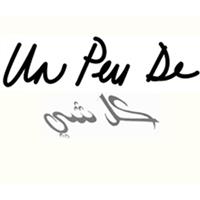When you first check out these images, you think they are just the ordinary photos of food markets or landscape sceneries, look closed and you will realize that every element in the photo is made of a food item. These are real photos made with food, or as Carl Warner likes to call them ‘Foodscapes’. The links were sent to me by a lovely reader NS, thank you.
I just loved the broccoli in this one, working with food is very difficult because you can’t keep the scenery from day to day or the food will spoil and might change in color or shape.
Here you can see the loaves of bread and the pieces of cheese.
In this video you can check out the ‘making of’ his landscapes and on his website you can also see movie ads made with the same concept yet moving and not still like the photos above.
Born in Liverpool, England in 1963, he moved to Kent at the age of seven where as an only child he spent hours in his room drawing and creating worlds from his imagination having been inspired by artists such as Salvador Dali, Patrick Woodroofe and record sleeve artists such as Roger Dean and the work of Hipgnosis. Carl began his career by going to art college with a view to becoming an illustrator as he had a talent for drawing yet quickly discovered that his ideas and creative eye was better suited to photography as a faster and more exciting medium in which to work.
Although a very keen landscape photographer he initially established himself as a successful still life photographer, and then began to branch out into other areas of photography in the advertising world, shooting people and landscapes for a wide variety of products and brands. Over the past ten years he has been developing a body of work making landscapes out of food, and has been commissioned by many advertising agencies throughout the world to produce these for clients in the food industry.
The ‘Foodscapes’ are created in Carl’s London studio where they are built on top of a large purpose built triangular table top. The scenes are photographed in layers from foreground to background and sky as the process is very time consuming and so the food quickly wilts under the lights. Each element is then put together in post production to achieve the final image.
“ Although I’m very hands on with my work, I do use model makers and food stylists to help me create the sets. I tend to start with a drawing which I sketch out in order to get the composition worked out, this acts as a blue print for the team to work to.”
These images can take up to two or three days to build and photograph and then a couple of days retouching and fine tuning the images to blend all the elements together. “Although there is a fair amount of waste, there is a lot of food left over which is always shared out with the team, though most of the food used in the sets have either been super glued or pinned and none of this makes for good eating!”
Thank you NS for sharing this !













Awww I love the clouds!!
I always look for neat stuff. I shared this Carl Warner work with my daughter and she sent me this one last week which it is another neat one, hope you like it…IT has many cute idea. I believe we wore clothing in newspaper prints when I was younger when the fashion was all in black and white. Thank you for sharing the links,I like your blog too.
http://pastesf.com/pages/tablepages/architecturetable.html
What made it more interesting is the video. Seeing the artist in action! Very nice
Babble : yes they are beautiful, everything he’s done is so creative !
NS: Thank you again for the links, keep them coming 🙂 Loved the newspaper one, very cute
Pascale A: You are right, you can’t actually appreciate it until you see all the effort he goes through up to the tiny details, all before it spoils!!
I just loved this post! These food landscapes are truly sensational and amazing, the painter truly admired me! I am a professional photographer and artist and love visiting such blogs. These photographs will now be shared by me on social media !! Thank you again!